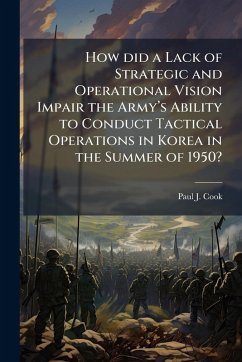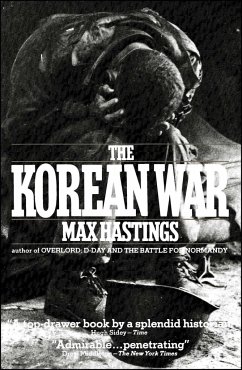
Combat Actions in Korea

PAYBACK Punkte
11 °P sammeln!
This book was originally published in 1954, the year following the close of the Korean War. The accounts of small-unit actions were written primarily for junior officers, noncommissioned officers, and privates of the United States Army who had not yet been in battle. The object was to acquaint them with the recent combat experiences of others and thus better prepare them for the realities of their own fields. Since the Korean War, some of the tools and procedures of battle have changed, but the basic conditions of combat have not. Indeed, the surprises, confusion, and problems faced on one bat...
This book was originally published in 1954, the year following the close of the Korean War. The accounts of small-unit actions were written primarily for junior officers, noncommissioned officers, and privates of the United States Army who had not yet been in battle. The object was to acquaint them with the recent combat experiences of others and thus better prepare them for the realities of their own fields. Since the Korean War, some of the tools and procedures of battle have changed, but the basic conditions of combat have not. Indeed, the surprises, confusion, and problems faced on one battlefield generally resemble the difficulties met on another. Accounts of battle experience at other times in other places, then, continue to have instructive value. This work has been selected by scholars as being culturally important, and is part of the knowledge base of civilization as we know it. This work was reproduced from the original artifact, and remains as true to the original work as possible. Therefore, you will see the original copyright references, library stamps (as most of these works have been housed in our most important libraries around the world), and other notations in the work. This work is in the public domain in the United States of America, and possibly other nations. Within the United States, you may freely copy and distribute this work, as no entity (individual or corporate) has a copyright on the body of the work. As a reproduction of a historical artifact, this work may contain missing or blurred pages, poor pictures, errant marks, etc. Scholars believe, and we concur, that this work is important enough to be preserved, reproduced, and made generally available to the public. We appreciate your support of the preservation process, and thank you for being an important part of keeping this knowledge alive and relevant.












